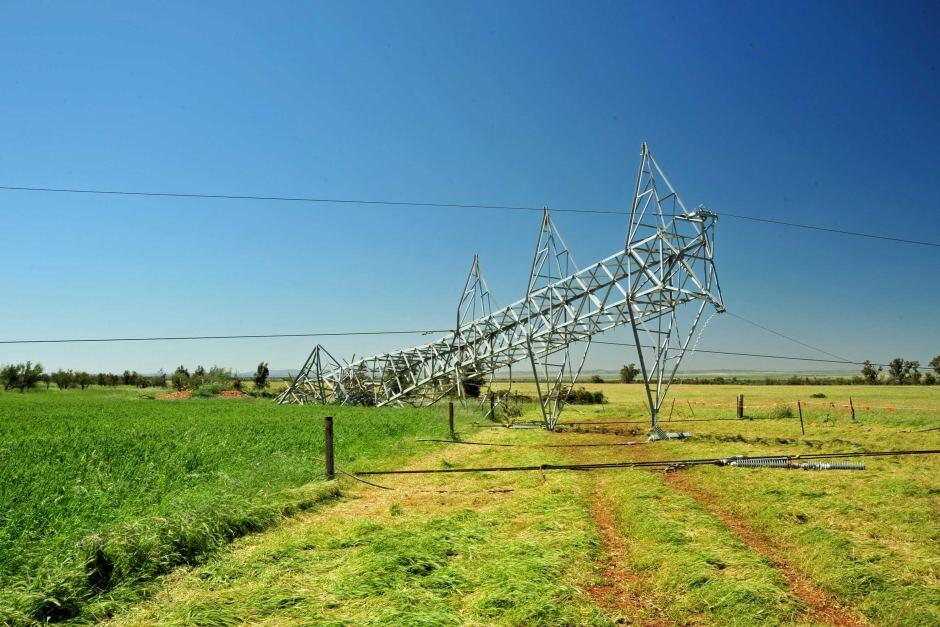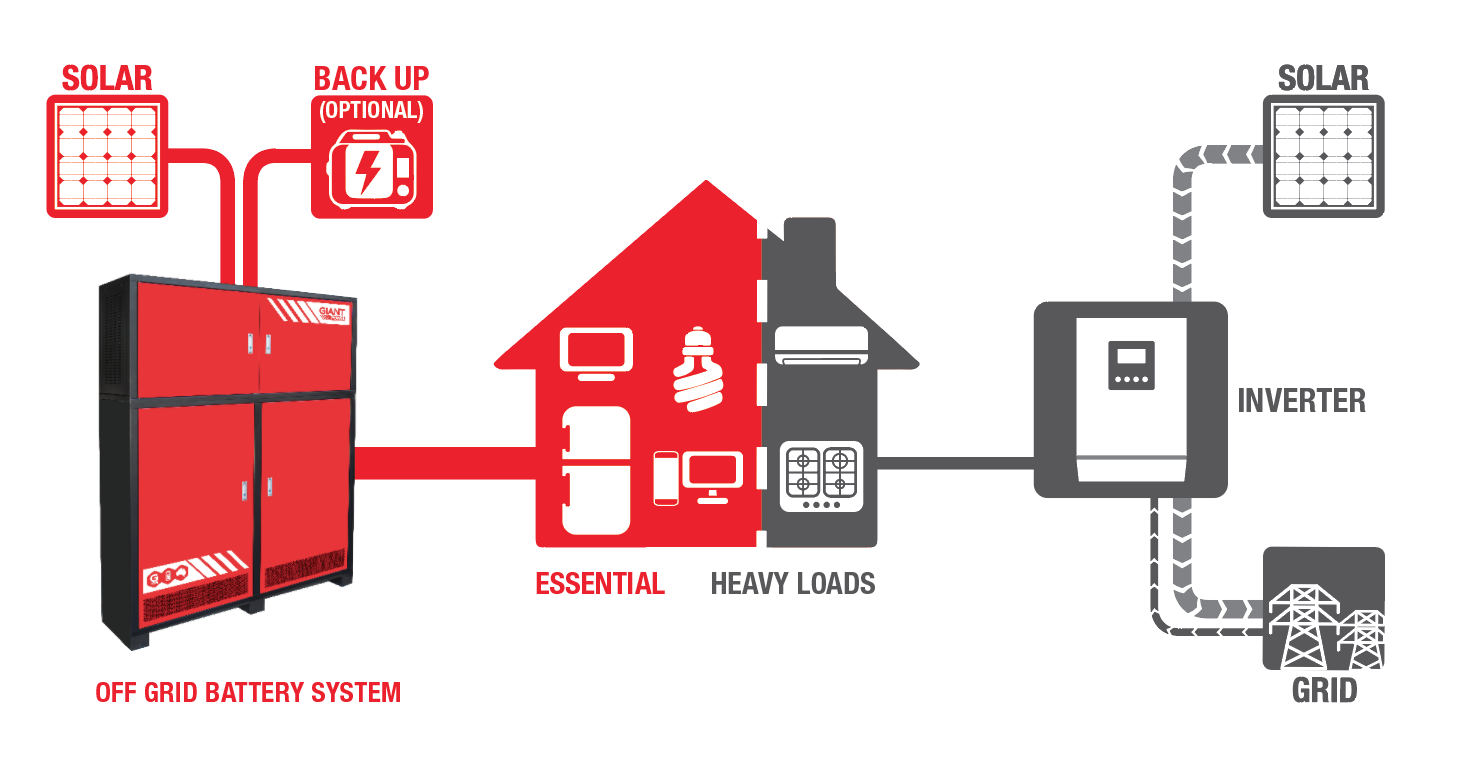Home battery storage is becoming increasingly popular in Australia, and one of the most in-demand features is backup power, which provides electricity to a home even when the grid is down. In this article we take a look at the main approaches to battery storage that you’ll come across as you shop around for a system, as well as some of the considerations a shopper should keep in mind.
Compare solar & battery storage quotes from installers in your area!
Compare Solar & Battery Quotes
Not all home battery storage systems provide backup power
We should firstly let our readers know that having batteries in your home does not necessarily mean having backup power functionality. Even for simple grid-connected solar PV systems, when the grid goes down, the power goes out – mainly for the safety of people working on the downed lines. Some solar inverters may allow you to tap into the the solar energy your panels are producing, but unless specifically included in your sales contract or other documentation, this is usually not the case.
Because of their history of use in off-grid power systems where there is no grid connection, many people incorrectly assume that all solar systems with batteries have backup power functionality, In fact, many battery storage products available in Australia do not provide backup support, or require a special inverter in order to provide it.
The take-home point is this: If backup power is something that you want out of your battery storage system, make sure that you’ve received explicit confirmation from the company designing/installing your system that this is the case.
Types of battery back-up
There are roughly four approaches to home solar battery backups, although the difference may sometimes be fuzzy. These are:
 Uninterruptible power supply (UPS) (full home backup)
Uninterruptible power supply (UPS) (full home backup)
This is the industrial-grade solution for backup power needs, often required by hospitals and industries with sensitive equipment whose uninterrupted operation is critical. With a UPS, if the grid goes down, the lights within your home will probably not even flicker. Most households do not require and are not willing to pay for this degree of dependability – unless they are operating critical medical equipment in the home. Be cautious of sales people who refer to battery backup functionality as a UPS, because they may actually be referring to an interruptible power supply (see below). Make sure you get them to clarify what they mean by ‘UPS’ before you purchase.
‘Interruptible’ power supply (full home backup)
The next step down from a UPS is what we’ll term as ‘interruptible power supply’, or IPS. An IPS will allow your whole home to keep running on solar & batteries if the grid goes down, but you will experience a short period (a few seconds) where everything goes black or grey in your home as the backup system steps into gear. You may have to reset your flashing digital clocks, but other than that you’ll be able to use all of your appliances as you usually would for as long as your batteries last.
Emergency power supply (partial backup)
Some backup power functionality works by switching on an emergency circuit when it senses that the grid has gone down. This will allow the home power devices connected to this circuit – usually fridges, lights and a few dedicated power outlets – to continue running off of the batteries and/or solar panels for the blackout period. This sort of backup is likely to be the most popular, sensible and affordable option for homes around Australia, as running an entire household on a battery bank will quickly drain them.
 Partial off-grid solar & storage system
Partial off-grid solar & storage system
A final option that may be attractive is a ‘partial off-grid system‘. With a partial off-grid system, the idea is to create a dedicated ‘off-grid’ section of the home, which continuously runs on a solar & battery system large enough to sustain itself without drawing energy from the grid. This way, essential household loads (fridges, lights, etc) remain on even if the grid goes down, without any kind of interruption. Additionally, because the solar & batteries are sized to run indefinitely on their own without the grid, there would be no need to ration energy use unless extra devices were plugged into the off-grid circuit.
How far will your batteries carry you?
Even if you do have backup functionality in your solar & battery system, you will of course need to be mindful of how much energy you consume while the power is out, as your resources will be limited. If you have a full home backup, you may only get half a day’s worth of energy if you continue to allow your appliances to operate ‘business as usual’. Shutting off & unplugging unnecessary devices throughout the house as soon as the power goes down could significantly extend the amount of time you can keep things running without the grid.
Remember that it’s not a given that your solar panels will re-charge your batteries once the grid is down (this is something you’ll need to ask your installer about). Furthermore, if you live in an area with frequent, long blackouts, you probably won’t want to rely on batteries alone (at least not at today’s prices, anyhow). In this case, you might want to investigate installing a diesel generator to supplement the energy supplied by your solar & battery system.
Check out these useful resources:
Compare solar & battery storage quotes for your area
Compare Solar & Battery Quotes
Learn more about battery storage: Check out our Battery Storage 101 page
Try our Solar & Battery Storage Sizing & Payback Estimator Tool or our Battery Retrofit Sizing Estimator Tool
Check out our Battery Storage Product Performance Comparison Tool
© 2019 Solar Choice Pty Ltd
- Running Cost of Air Conditioners – Explained - 7 October, 2025
- Air Conditioner Rebate South Australia: What You Need to Know - 19 September, 2025
- Air Conditioner Rebates in Queensland: What You Need to Know - 19 September, 2025